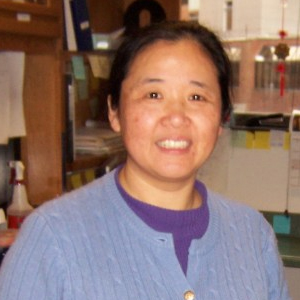Previous Lab Members
Matthew Duvernay
Research Assistant Professor, Pharmacology
Research Interests:
Coming from a purely pharmacological background with an emphasis on G protein-coupled receptors (GPCR) my general research interest lies in understanding how this very effective signaling module has been adapted to controlling signaling events across all systems in the body, by dissecting out the details through which they have diversified and distinguished themselves in each tissue. My post-doctoral work is focused on characterizing the signaling of a unique group of G protein-coupled receptors (GPCRs), the protease activated receptors (PAR) in two primary tissues: platelets and Human Umbilical Vein Endothelial Cells (HUVECs). I am interested in defining conventional paradigms of signaling through these receptors, differences in signaling pathways initiated by different receptor subtypes, and also functional selectivity displayed by these receptor in response to endogenous ligands and also demonstrating how these signaling paradigms contribute to primary cell physiology.
Publications:
Duvernay MT, Temple KJ, Maeng JG, et al. Contributions of Protease-Activated Receptors PAR1 and PAR4 to Thrombin-Induced GPIIbIIIa Activation in Human Platelets. Mol Pharmacol. 2017;91(1):39-47.
Temple KJ, Duvernay MT, Maeng JG, et al. Identification of the minimum PAR4 inhibitor pharmacophore and optimization of a series of 2-methoxy-6-arylimidazo[2,1-b][1,3,4]thiadiazoles. Bioorg Med Chem Lett. 2016;26(22):5481-5486.
Temple KJ, Duvernay MT, Young SE, et al. Development of a Series of (1-Benzyl-3-(6-methoxypyrimidin-3-yl)-5-(trifluoromethoxy)-1H-indol-2-yl)methanols as Selective Protease Activated Receptor 4 (PAR4) Antagonists with in Vivo Utility and Activity Against γ-Thrombin. Journal of medicinal chemistry. 2016; 59(16):7690-5.
Oliver KH, Duvernay MT, Hamm HE, Carneiro AM. Loss of Serotonin Transporter Function Alters ADP-mediated Glycoprotein αIIbβ3 Activation through Dysregulation of the 5-HT2A Receptor. The Journal of biological chemistry. 2016; 291(38):20210-9.
Duvernay MT, Matafonov A, Lindsley CW, Hamm HE. Platelet Lipidomic Profiling: Novel Insight into Cytosolic Phospholipase A2α Activity and Its Role in Human Platelet Activation. Biochemistry. 2015; 54(36):5578-88.
A Novel and Selective PAR4 Antagonist: ML354. Young SE, Duvernay MT, Schulte ML, Nance KD, Melancon BJ, Engers J, Wood MR, Hamm HE, Lindsley CW. Probe Reports from the NIH Molecular Libraries Program [Internet]. Bethesda (MD): National Center for Biotechnology Information (US); 2010-2013 Apr 15 [updated 2015 Feb 11].
Substituted indoles as selective protease activated receptor 4 (PAR-4) antagonists: Discovery and SAR of ML354. Wen W, Young SE, Duvernay MT, Schulte ML, Nance KD, Melancon BJ, Engers J, Locuson CW 2nd, Wood MR, Daniels JS, Wu W, Lindsley CW, Hamm HE, Stauffer SR. Bioorg Med Chem Lett. 2014 Oct 1;24(19):4708-13
Racial differences in resistance to P2Y12 receptor antagonists in type 2 diabetic subjects. Cleator JH, Duvernay MT, Holinstat M, Colowick NE, Hudson WJ, Song Y, Harrell FE, Hamm HE. J Pharmacol Exp Ther. 2014 Oct;351(1):33-43.
Synthesis of indole derived protease-activated receptor 4 antagonists and characterization in human platelets. Young SE, Duvernay MT, Schulte ML, Lindsley CW, Hamm HE. PLoS One. 2013 Jun 11;8(6):e65528.
The angiotensin II type 1 receptor C-terminal Lys residues interact with tubulin and modulate receptor export trafficking. Zhang X, Wang H, Duvernay MT, Zhu S, Wu G. PLoS One. 2013;8(2):e57805.
Alpha2B-adrenergic receptor interaction with tubulin controls its transport from the endoplasmic reticulum to the cell surface. Duvernay MT, Wang H, Dong C, Guidry JJ, Sackett DL, Wu G. J Biol Chem. 2011 Apr 22;286(16):14080-9.
ADP-ribosylation factors modulate the cell surface transport of G protein-coupled receptors. Dong C, Zhang X, Zhou F, Dou H, Duvernay MT, Zhang P, Wu G. J Pharmacol Exp Ther. 2010 Apr;333(1): 174-83.
Duvernay MT, Dong C, Zhang X, Robitaille M, Hébert TE, Wu G. A single conserved leucine residue in the first intracellular loop regulates ER export of G protein-coupled recetors. Traffic.2009,10:552-66
Duvernay MT, Dong C, Zhang X, Zhou F, Nichols CD, Wu G. Anterograde trafficking of G protein-coupled receptors: function of the C-terminal F(X)6LL motif in export from the endoplasmic reticulum. Mol Pharmacol. 2009, 75:751-61.
Dong C, Filipeanu CM, Duvernay MT, Wu G. Regulation of G protein-coupled receptor export trafficking. (Invited review). Biochim Biophys Acta. 2007, 1768:853-70.
Zhou F, Filipeanu CM, Duvernay MT, Wu G. Cell-surface targeting of alpha2-adrenergic receptors — inhibition by a transport deficient mutant through dimerization. Cell Signal. 2006, 18:18-27.
Duvernay MT, Filipeanu CM, Wu G. The regulatory mechanisms of export trafficking of G protein-coupled receptors. (Invited Review). Cell Signal. 2005, 17:1457-65.
Duvernay MT, Zhou F, Wu G. A conserved motif for the transport of G protein-coupled receptors from the Endoplasmic Reticulum to the Cell Surface. J Biol Chem. 2004, 279:30741-50.
Karren Hyde
Research Specialist Sr., Pharmacology
Education:
Bachelor of Arts, Zoology, University of Tennessee, Knoxville
Master of Laboratory Investigation, Vanderbilt University
Research Interests:
My research interests involve the biomolecular origins and mechanisms of cell signaling pathways, from the genomic level through phenotypic expression.
Publications:
Betke KM, Rose KL, Friedman DB, Baucum AJ 2nd, Hyde K, Schey KL, Hamm HE. Differential localization of G Protein βγ subunits. Biochemistry, 53(14): 2329-43, April 2014.
Wells CA, Zurawski Z, Betke KM, Yim YY, Hyde K, Rodriguez S, Alford S, Hamm HE. Gβγ inhibits exocytosis via interaction with critical residues on soluble N-ethylmaleimide-sensitive factor attachment protein-25. Mol Pharmacol. 82(6):1136-49, Dec. 2012.
Georgoussi Z, Leontiadis L, Mazarakou G, Merkouris M, Hyde K, Hamm H. Selective interactions between G protein subunits and RGS4 with the C-terminal domains of the mu- and delta-opioid receptors regulate opioid receptor signaling. Cell Signaling, 18 (6): 771-782, June 2006.
H.G. Zhang, K. Hyde, G.P. Page, J.P.L. Brand, J. Zhou, S.H.Yu, D.B.Allison, H.C. Hsu, and J.D. Mountz. TNF-α Induced NF-ΚB Regulated Genes in RASF. Arthritis and Rheumatism, 50 (2): 420-431, February, 2004.
Suzette Tardif, Karren Hyde, and Leslie Digby. Evidence for Suppression of Ovulation in Singly-Housed Female Common Marmosets (Callithrix jacchus). Laboratory Primate Newsletter, 33 (2): 2, April,1994.
Ali Kaya, Ph.D.
Research Fellow, Pharmacology
Education:
Ph.D. Biotechnology Institute, University of Ankara, Turkey, 2009
MSc. School of Medicine, Medical Biology Department, University of Ankara, Turkey. 2003
Research Interests:
Heterotrimeric G proteins are one of the most important signal transducing molecules in the cells. They trigger different intracellular signaling cascades in response to the activated GPCRs. Ligand activation of GPCRs leads to G protein binding and catalyzes GDP release from the G protein a subunit. Once GDP is released, a stable, high-affinity complex between the activated receptor and nucleotide free G protein is formed. Binding of GTP to Ga destabilizes this complex and results in dissociation of receptor, GTP-bound Ga and Gbg. Both Gaand Gbg subunits then trigger downstream signaling cascades. After GTP is hydrolyzed to GDP, the Ga subunit reassociates with Gbg, thus completing the cycle.
The guanine nucleotide-binding pocket of the Ga subunit is ~25 Å away from the receptor contact sites. Thus, the receptor must induce a conformational change in the G protein to cause GDP release over this distance. Different studies proposed the potential receptor-catalyzed GDP release mechanisms. Our lab identified that activated rhodopsin induces a rotation and translation of the Ga a5 helix and for receptor-mediated GTP-GDP exchange to occur, the GTPase and helical domains must open up. Although the position of the helical domain is critical for GDP release, the mechanisms of the trigger of this large conformational change are still unknown. Our major focus is to understand the molecular and mechanistic basis of G protein activation by an activated receptor.
Publications:
Functional stability of rhodopsin in a bicelle system: evaluating G protein activation by rhodopsin in bicelles. Kaya AI, Iverson TM, Hamm HE. Methods Mol Biol. 2015;1271:67-76.
A conserved phenylalanine as a relay between the α5 helix and the GDP binding region of heterotrimeric Gi protein α subunit. Kaya AI, Lokits AD, Gilbert JA, Iverson TM, Meiler J, Hamm HE. J Biol Chem. 2014 Aug 29;289(35):24475-87.
Energetic analysis of the rhodopsin-G-protein complex links the α5 helix to GDP release. Alexander NS, Preininger AM, Kaya AI, Stein RA, Hamm HE, Meiler J. Nat Struct Mol Biol. 2014 Jan;21(1):56-63.
Linking receptor activation to changes in Sw I and II of Gα proteins. Hamm HE, Kaya AI, Gilbert JA 3rd, Preininger AM. J Struct Biol. 2013 Oct;184(1):63-74.
Preininger A.M., Kaya A.I., Gilbert J.A. 3rd, Busenlehner L.S., Armstrong R.N., Hamm H.E. Myristoylation exerts direct and allosteric effects on Gα conformation and dynamics in solution. Biochemistry. 2012, 51(9): 1911-24.
Kaya A.I., Onaran H.O., Ozcan G, Ambrosio C, Costa T, Balh S, Ugur O. Cell Contact-Dependent Functional Selectivity of β2-Adrenergic Receptor Ligands in Stimulating cAMP Accumulation and Extracellular Signal-Regulated Kinase (ERK) Phosphorylation. J. Biol. Chem. 2012, 287: 6362-74.
Thaker T.M., Kaya A.I., Preininger A.M., Hamm H.E., Iverson T.M. Allosteric mechanisms of G protein-Coupled Receptor signaling: a structural perspective. Methods Mol Biol. 2012,796:133-74.
Kaya A.I, Ugur O, Altuntas O, Sayar K, Onaran H.O. Long and short distance movements of β(2)-adrenoceptor in cell membrane assessed by photoconvertible fluorescent protein dendra2-β(2)-adrenoceptor fusion. Biochim Biophys Acta. 2011, 1813(8):1511-24
Van Eps N., Preininger A.M., Alexander N., Kaya A.I, Meier S., Meiler J., Hamm H.E., Hubbell W.L. Interaction of a G protein with an activated receptor opens the interdomain interface in the alpha subunit. PNAS. 2011, 108(23);9420-9424
Kaya A.I, Thaker T.M., Preininger A.M., Iverson T.M., Hamm H.E. Coupling Efficiency of Rhodopsin and Transducin in Bicelles. Biochemistry. 2011, 15(50); 3193-3203
Oner S.S., Kaya A.I., Onaran H.O., Ozcan G., Ugur O. β2-Adrenoceptor, Gs and adenylate cyclase coupling in purified detergent-resistant, low-density membrane fractions. Eur J Pharmacol. 2010, 630: 42-52
Jin Liao
Research Assistant II, Pharmacology
Education:
Bachelors of Arts, Finance, Shanxia University (Chongqing, China)
Research Interests:
Assist everyone in the lab, from general maintenance to all areas of molecular biology specializing in protein purification.
Publications:
Trp fluorescence reveals an activation-dependent cation-pi interaction in the Switch II region of Galphai proteins. Hamm HE, Meier SM, Liao G, Preininger AM. Protein Sci. 2009 Nov;18(11):2326-35.
Receptor-mediated changes at the myristoylated amino terminus of Galpha(il) proteins. Preininger AM, Parello J, Meier SM, Liao G, Hamm HE. Biochemistry. 2008 Sep 30;47(39):10281-93.
Alyssa Lokits
Graduate Student, Neuroscience
Education:
B.A,.University of Kansas, 2012
Research Interests:
Heterotrimeric G protein activation via interaction with G protein coupled receptors (GPCRs) represents one of the primary means of cellular signaling in humans. This initial activation of intracellular signaling cascades also represents the pharmacological target of roughly 50% of drug therapeutics on the market. Therefore, it is imperative for the advancement of human medicine to understand receptor – G protein interactions and the mechanism of G protein activation.
To date, much has been done to investigate the receptor-G protein interactions. Recent structural advancements have greatly improved our understanding of these proteins in complex. However, such studies have led to new questions regarding coupling interactions, dynamics, and selectivity. My research investigates the sequence and structure-based underpinnings of these protein-protein interactions, and how these interactions lead to G protein activation.
Publications:
A conserved phenylalanine as a relay between the α5 helix and the GDP binding region of heterotrimeric Gi protein α subunit. Kaya AI, Lokits AD, Gilbert JA, Iverson TM, Meiler J, Hamm HE. J Biol Chem. 2014 Aug 29;289(35):24475-87.
Jae Maeng
Research Assistant I, Pharmacology
Education
Bachelor of Arts, Biological Sciences, Vanderbilt University, 2015
Master of Laboratory Investigation, Vanderbilt University, 2018
Research Interests
Joined the Hamm Lab in 2015. Involved in screening of compounds against Protease Activated Receptor 4 (PAR4).
Duvernay MT, Temple KJ, Maeng JG, Blobaum AL, Stauffer SR, Lindsley CW, Hamm HE. Contributions of Protease-Activated Receptors PAR1 and PAR4 to Thrombin-Induced GPIIbIIIa Activation in Human Platelets. Molecular pharmacology. 2017 Jan;91(1). 39-47.
Temple KJ, Duvernay MT, Maeng JG, Blobaum AL, Stauffer SR, Hamm HE, Lindsley CW. Identification of the minimum PAR4 inhibitor pharmacophore and optimization of a series of 2-methoxy-6-arylimidazo[2,1-b][1,3,4]thiadiazoles. Bioorganic & medicinal chemistry letters. 2016 Dec 15;26(22). 5481-5486.
Temple KJ, Duvernay MT, Young SE, Wen W, Wu W, Maeng JG, Blobaum AL, Stauffer SR, Hamm HE, Lindsley CW. Development of a Series of (1-Benzyl-3-(6-methoxypyrimidin-3-yl)-5-(trifluoromethoxy)-1H-indol-2-yl)methanols as Selective Protease Activated Receptor 4 (PAR4) Antagonists with in Vivo Utility and Activity Against γ-Thrombin. Journal of medicinal chemistry. 2016 Aug 25;59(16). 7690-5.
Kendra Oliver
Graduate Student, Pharmacology
Education:
Bachelor of Science, Loyola University Chicago, 2010
Research Interests:
Platelet hyperactivity is associated with increased blood clot formation, leading to heart disease and stroke. Heart disease and stroke are the first and third leading killers in the US. Even with successes treating cardiovascular disease, advances and novel therapeutic options are needed to reduce thrombotic risk associated with platelet hyperactivity. A clinical observation has shown that treatment with selective serotonin reuptake inhibitors (SSRIs) leads to a bleeding phenotype and reduced platelet aggregation. SSRIs are the most commonly prescribed treatment for depression and depression has a direct correlation with development of cardiovascular disease. This was recently emphasized in statement released by the American Heart Association officially classifying depression as a risk factor for poor outcomes following acute coronary syndrome. Further examination of the serotonergic system in platelet reactivity is needed. My research suggests that peripherally active SSRIs could be used as a potential new treatment for platelet hyperactivity through modulation of the serotonergic signaling system. In particular, we believe that this occurs through 5HT2A receptor biased signaling, modulating integrin dependent adhesion.
Publications:
Kendra H Oliver, Tammy Jessen, Emily L Crawford, Chang Y Chung, James S Sutcliffe, and Ana M Carneiro. Pro32Pro33 Mutations in the Integrin β3 PSI Domain Results in αIIbβ3 Priming and Enhanced Adhesion: Reversal of the Hypercoagulability Phenotype by the Src Inhibitor SKI-606. Mol Pharmacol 2014 Jun;85(6):921-31.
Yun Young (Susan) Yim
Postdoctoral Fellow, Pharmacology
Education
B.S. Biochemistry/Chemistry, University of California, San Diego, 2010 (La Jolla, CA).
Ph.D. Pharmacology, Vanderbilt University, 2017 (Mentor:Heidi Hamm).
Research interests
Modulation of neurotransmitter exocytosis by activated Gi/o coupled G-protein coupled receptors (GPCRs) is a universal regulatory mechanism used both to avoid overstimulation and to influence circuitry. One of the known modulation mechanisms is the Gβγ and soluble N-ethylmaleimide-sensitive factor attachment protein receptor (SNARE) interaction. There are 5 Gβ and 12 Gγ subunits, but specific Gβγs activated by a given GPCR and the in vivo specificity to effectors is not known. Using the quantitative MRM mass spectrometry, I am interested in understanding the abundance, subcellular localization, and specificity of neuronal Gβ and Gγ subunits to various GPCRs and effectors. I mainly focus on the Gβ and Gγ specificity to auto α2a adrenergic receptors (α2aARs), hetero α2aARs, and SNARE in presence of epinephrine. Moreover, I study the molecular interaction of Gβγ and SNARE proteins to understand the microarchitecture of the Gβγ and SNARE interaction. From these studies, I hope to form the basis for further investigations to determine the effect of G protein specificity on its downstream signaling, identify potential pathophysiological states in which the Gβγ-SNARE interaction may be dysregulated, and yield additional insights into Gi/o-coupled GPCR-mediated regulation of exocytosis.
Publications
Yim YY, McDonald WH, Hyde K, Cruz-Rodríguez O, Tesmer JJG, Hamm HE. Quantitative Multiple-Reaction Monitoring Proteomic Analysis of Gβ and Gγ Subunits in C57Bl6/J Brain Synaptosomes. Biochemistry. 2017; 56(40):5405-5416.
Van Hook MJ, Babai N, Zurawski Z, Yim YY, Hamm HE, Thoreson WB. A Presynaptic Group III mGluR Recruits Gβγ/SNARE Interactions to Inhibit Synaptic Transmission by Cone Photoreceptors in the Vertebrate Retina. The Journal of neuroscience : the official journal of the Society for Neuroscience. 2017; 37(17):4618-4634.
Yim YY, Betke K, Hamm H. Using peptide arrays created by the SPOT method for defining protein-protein interactions. Methods in molecular biology (Clifton, N.J.). 2015; 1278:307-20.
Wells CA, Zurawski Z, Betke KM, et al. Gβγ inhibits exocytosis via interaction with critical residues on soluble N-ethylmaleimide-sensitive factor attachment protein-25. Molecular pharmacology. 2012; 82(6):1136-49.
Ilouz R, Bubis J, Wu J, et al. Localization and quaternary structure of the PKA RIβ holoenzyme. Proceedings of the National Academy of Sciences of the United States of America. 2012; 109(31):12443-8.
Awards
First place in the Division for Molecular Pharmacology Postdoctoral Award Oral Presentation Competition at ASPET (EB2018)
Zack Zurawski
Postdoctoral Fellow, Pharmacology
Research Interests:
Activated Gi/o-type G-protein coupled receptors (GPCRs) for neurotransmitters such as noradrenaline, 5-HT, and dopamine are capable of mediating the inhibition of secretory vesicle cargo release in neurons, adrenochromaffin cells and beta cells in the islets of Langerhans. The mechanisms for secretory vesicle exocytosis and the component
proteins involved are well-conserved between different populations of secretory-granule containing cells. One mechanism for which this phenomenon can occur is via the direct interaction between G protein beta gamma subunits (Gβγ) and the SNARE (soluble NSF attachment protein receptor) proteins of the cell’s vesicle fusion machinery to block vesicle fusion and subsequent cargo release. We have previously shown that Gβγ subunits directly bind to the t-SNARE proteins SNAP-25 and syntaxin1A as well as the v-SNARE protein synaptobrevin. We have established that Gβγ regulates vesicle fusion by competing with synaptotagmin I in a Ca2+ -sensitive manner for binding sites on SNARE proteins. To identify regions on SNARE proteins required for interaction with Gβγ as well as regions on Gβγ required for interaction with SNARE, we have utilized a peptide screening technique. From this, we have identified a series of residues upon SNAP-25 that reduce binding of Gβγ in in vitro protein binding studies. We have also generated a series of residues on Stx1A and Gβγ that we hypothesize are required for the Gβγ-Stx1A interaction. We intend to create full-length Gβγ and Stx1A proteins in which these residues have been mutagenized to Ala. We will then perform binding studies with these full-length Gβγ and Stx1A proteins, much as we did with SNAP-25. Furthermore, we will inject or transfect these proteins into neurons and neuroendocrine cell lines and look for disruption of Gi/o-coupled GPCR-mediated inhibition of exocytosis. From this, we will gain a great deal of structural insights on the nature of the interaction between Gβγ and SNARE. In addition, if introduction of a SNARE protein that specifically cannot bind Gβγ into a cell disrupts the ability of a given Gi/o-coupled GPCR to inhibit exocytosis, our hypothesis of Gβγ-SNARE interactions being vital to Gi/o-coupled GPCR-mediated inhibition of exocytosis will further be validated. Finally, this work will greatly facilitate the identification of additional cell types for which Gβγ -SNARE interactions play a significant role in inhibition of exocytosis, as we will be able to introduce our mutant SNAREs and Gβγ subunits into previously unexplored secretory cell types and look for significant changes in the ability of a given Gi/o-coupled GPCR to inhibit exocytosis.
Publications:
Zurawski Z, Page B, Chicka MC, et al. Gβγ directly modulates vesicle fusion by competing with synaptotagmin for binding to neuronal SNARE proteins embedded in membranes. The Journal of biological chemistry. 2017; 292(29):12165-12177.
Van Hook MJ, Babai N, Zurawski Z, Yim YY, Hamm HE, Thoreson WB. A Presynaptic Group III mGluR Recruits Gβγ/SNARE Interactions to Inhibit Synaptic Transmission by Cone Photoreceptors in the Vertebrate Retina. The Journal of neuroscience : the official journal of the Society for Neuroscience. 2017; 37(17):4618-4634.
Zurawski Z, Rodriguez S, Hyde K, Alford S, Hamm HE. Gβγ Binds to the Extreme C Terminus of SNAP25 to Mediate the Action of Gi/o-Coupled G Protein-Coupled Receptors. Molecular pharmacology. 2016; 89(1):75-83.
Modulation of neurotransmission by GPCRs is dependent upon the microarchitecture of the primed vesicle complex. Hamid E, Church E, Wells CA, Zurawski Z, Hamm HE, Alford S. J Neurosci. 2014 Jan 1;34(1):260-74.
Gβγ inhibits exocytosis via interaction with critical residues on soluble N-ethylmaleimide-sensitive factor attachment protein-25. Wells CA, Zurawski Z, Betke KM, Yim YY, Hyde K, Rodriguez S, Alford S, Hamm HE. Mol Pharmacol. 2012 Dec;82(6):1136-49.








